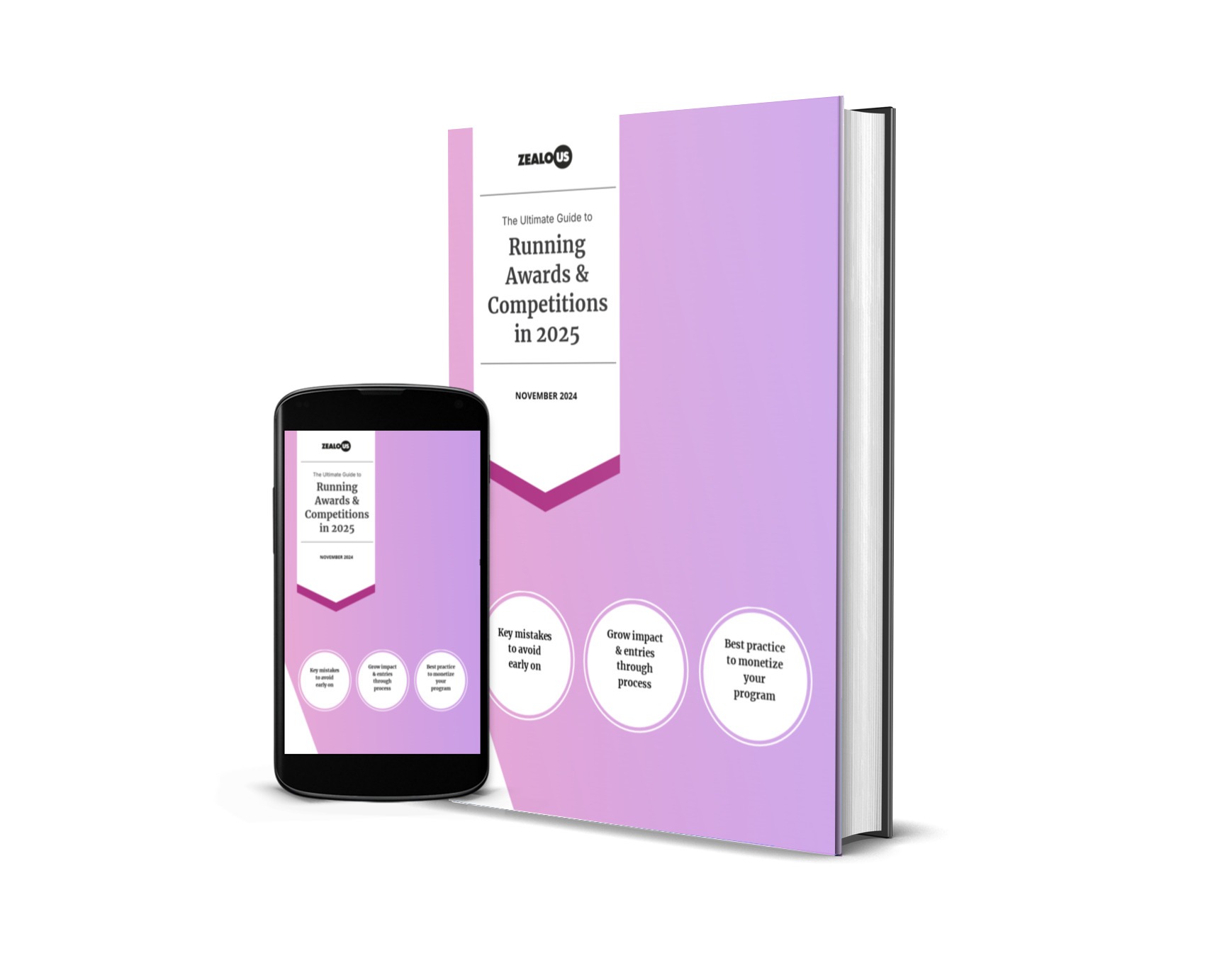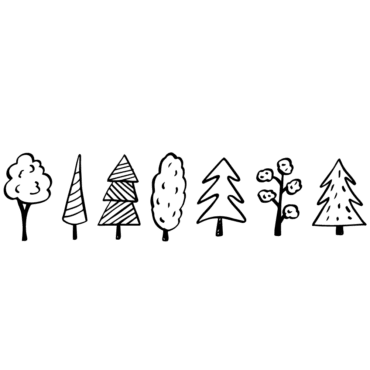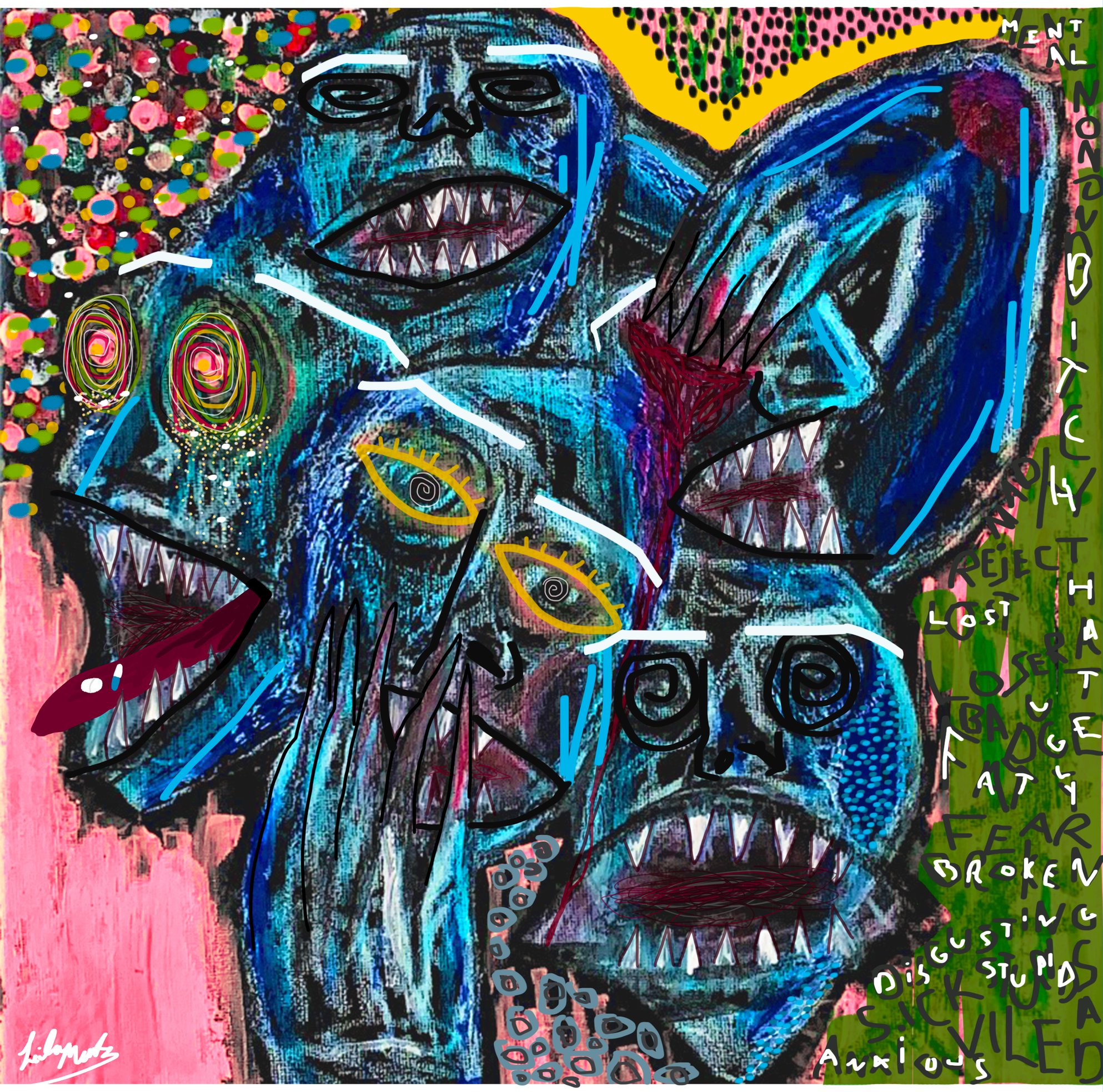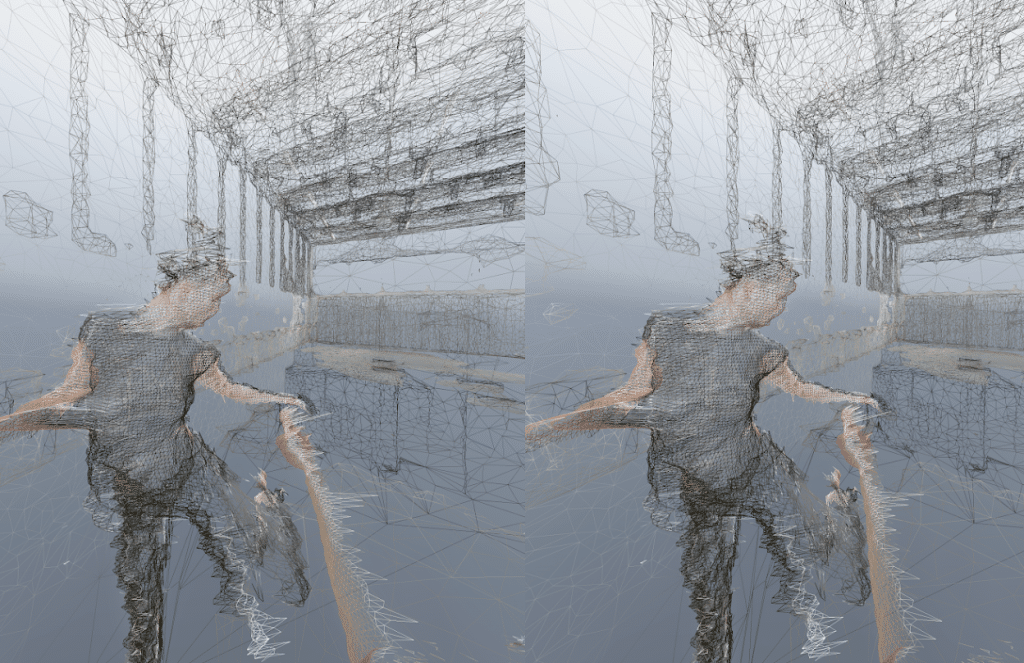
Dust is informed by your interest in the combination of choreographic thinking and digital art creation. What was it that sparked your desire to investigate the principles behind the creation of movement?
Mária: I was dancing when I was little, so the interest in movement is somewhere deep inside me. Later, when I studied at the Academy of Fine Arts, I became curious about how to visualise what I experienced physically. I enjoyed capturing bodies in motion, but I felt like there may be a better way to represent the physical sensation. I started to look more into digital art and explored different sensors.
When I experienced Andrej’s virtual reality installation “Forest” (2014), I felt that VR could work really well in the context of dance. It was as much of a physical experience as it was visual one. So that was the starting point for our collaboration and the desire to explore dance within a VR environment.
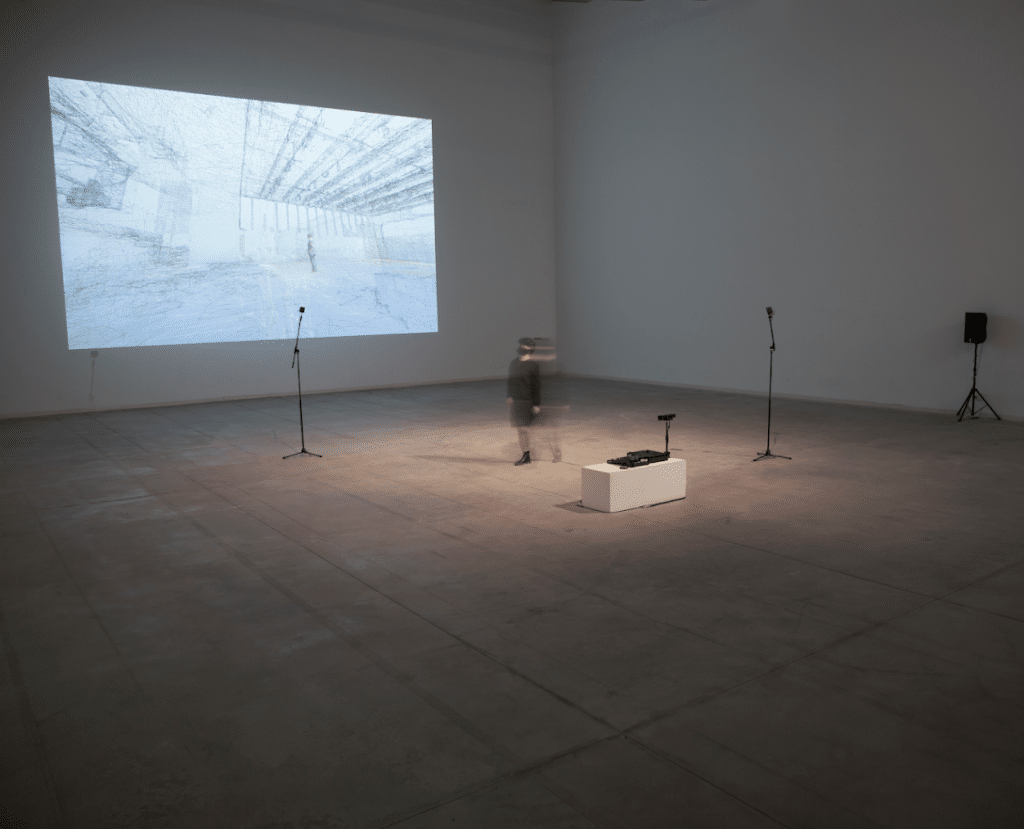
Could you tell us about your choice to collaborate with performers, choreographers and musicians? How have they aided your investigation?
The whole creation process started at Rambert Contemporary Dance Company in London. Here, we were digital artists in residence working alongside many incredible dancers. We made volumetric recordings of their improvisations and previewed them in VR. When you put the headset on, you could experience the performance within the space where the dance was happening. It was interesting to see strong emotional reactions – some approached the dancer to touch him, some moved within the space so not to cross his trajectory, while others improvised with him. This helped us to understand how it feels to be present inside the virtual space with a mover.
We were hoping to further explore what real-world and virtual experiences could offer one another. We came up with the idea of allowing the viewer to experience dance from the perspective of a dust particle, and that’s when our amazing producer Carmen Salas stepped in and helped us to kick off the development of Dust. This is also when our collaboration with choreographer Patricia Okenwa, dancers Soňa Ferienčíková and Roman Zotov started. They are all great professionals with a deep understanding of physicality. I should also mention musician Miles Whittaker, half of Demdike Stare, who created beautiful soundscapes specifically for Dust.
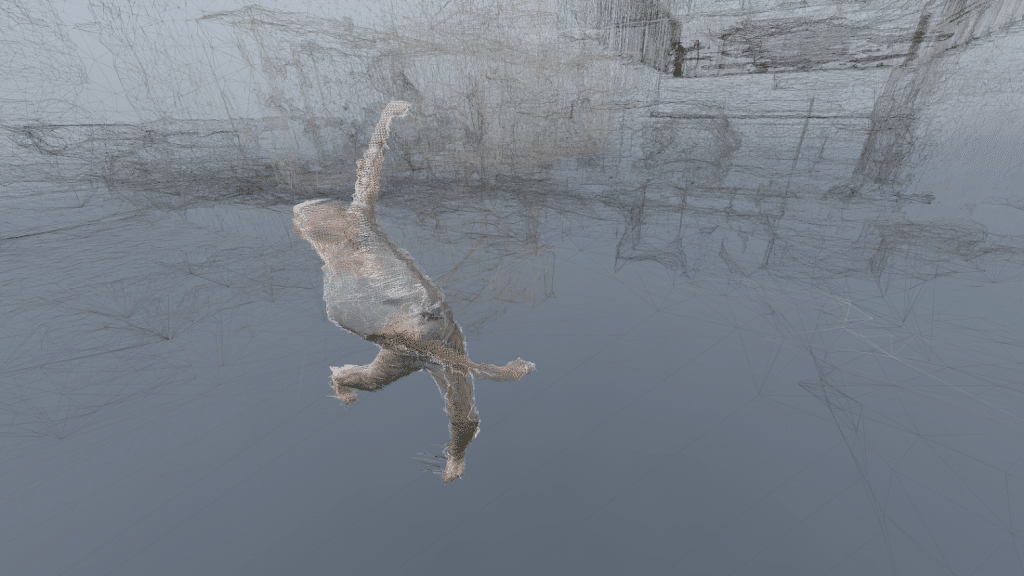
Where do you see the future of VR heading, particularly in terms of performance and its position as an art form?
VR has developed a lot in recent years. If you look at Oculus dk1 (clunky, low-res headset without 6DOF from 2013), and compare it with room-scale VR and untethered experiences nowadays, you see quite a change. I think we can expect more improvement of hardware and software, which goes hand in hand with new creative possibilities in how to use or misuse and subvert this technology.
Regarding VR as an art form, I would like to see more experiences where you are not passively watching, ignoring your own body and isolating yourself from everything/everyone around you. As VR creators, we like to create physically engaging VR experiences which are meant to be explored through movement and kinaesthetic senses, rather than solely through a visual sense.
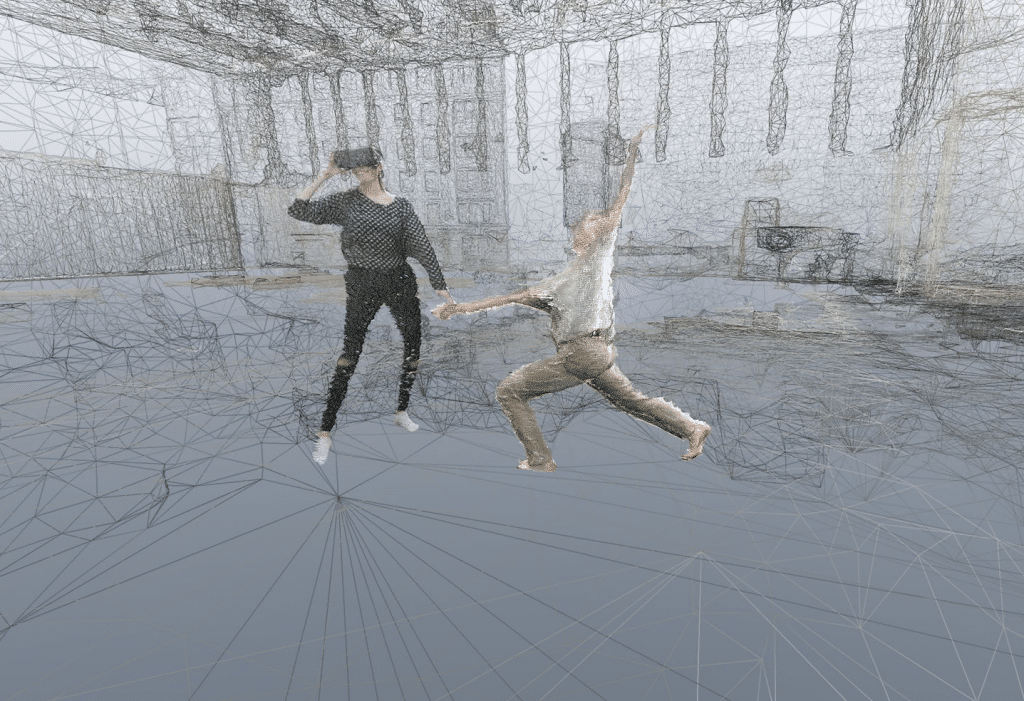
You mention that the piece is inspired by the concept of stardust and eternal particles. How is this interpreted within the project?
We found the concept of dust captivating. The idea that everything was formed from stardust was very inspiring for us. At the time, we were reading a fascinating philosophy book ‘In the Dust Of This Planet’, in which Eugene Thacker thinks about an increasingly remote point of view (that of dust, the planet, the cosmos and even nothingness itself) in order to create a different framework for interpreting reality. Thacker uses this metaphor to let us glimpse into a world so different, that it is difficult to imagine it influenced us.
In Dust, we use VR to create such a world. A world in which you can float around the dancer as if you were a dust particle. A world in which you experience how your physical body disintegrates into millions of particles as you fly around freely and unnoticed. I believe that it makes you re-imagine how it would be to see our reality from a different perspective. It makes you rethink your perception of body, space and time.
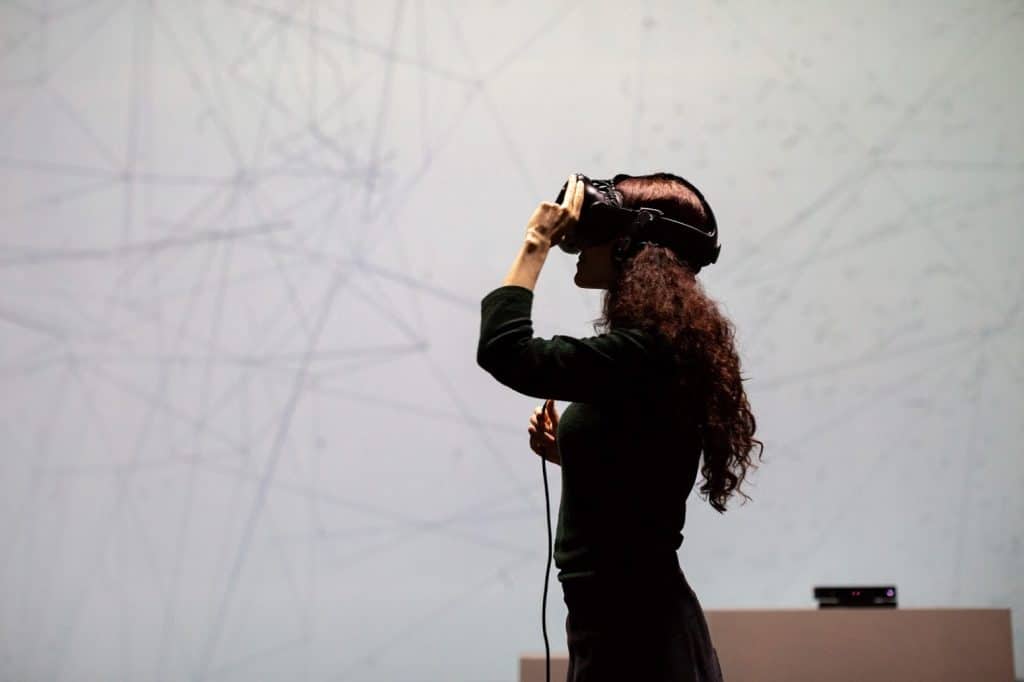
Dust explores the boundaries between virtual and real-world experiences. Do you feel some of the theories about VR are based on a human desire to escape the ‘real world’?
I find it interesting to think about VR in relation to escapism, and I feel we can look at VR as a manifestation of a human desire to escape. As Huxley put it “The urge to escape from selfhood and the environment is in almost everyone almost all the time.”
It’s funny that you ask this question because I have been thinking about VR concepts in relation to shamanistic tradition a lot lately. I am currently reading a book ‘Breaking Open the Head’, where Daniel Pinchbeck looks into how humans have been exploring altered states (using hallucinogenics) since the dawn of time, so changed perception is certainly not a recent phenomenon. I often think of how this translates into VR. My upcoming work is a VR experience taking inspiration from ancient culture, civilisation, ritualistic and folkloric practices.
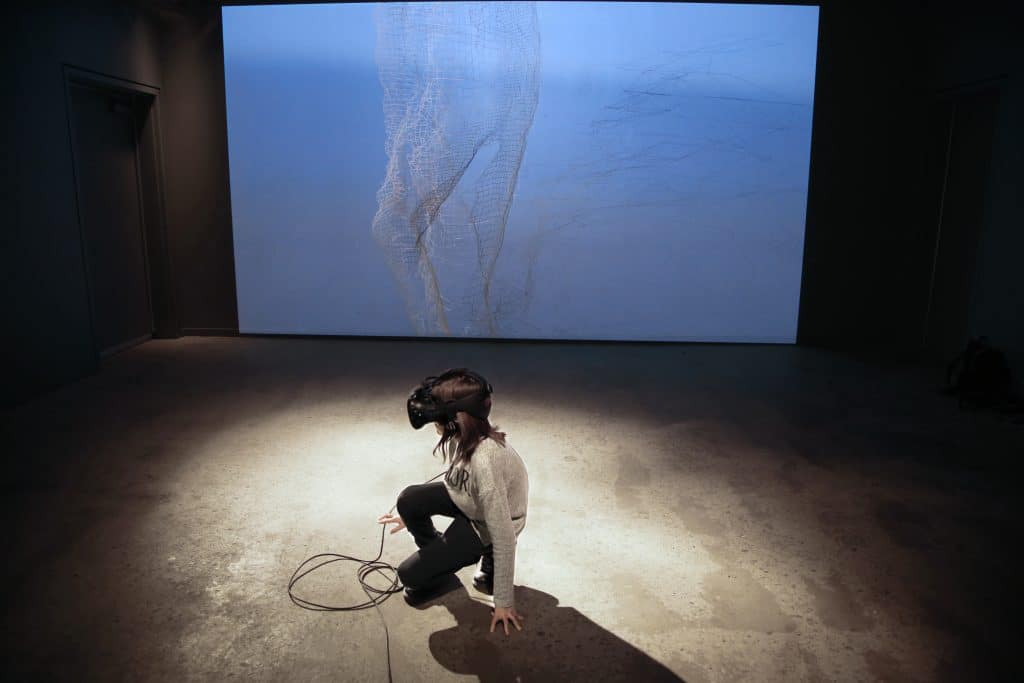
What piece of advice would you give to artists with a focus on new media and VR in terms of gaining exposure?
I am often very focused on research and creation, so in relation to that, the understanding of the field and constant learning seems important to me.
Use the knowledge which is already out there. Technology is fast-evolving, so if you want to create cutting-edge work, you may have to follow the latest trends. It’s important to know your tools and create what makes sense for you. Exposure has both a quantitative and qualitative dimension, it’s not just about how many people see your work, but it is important to consider who these people are. I think there are many opportunities (open calls, artist residencies, festivals, exhibitions etc.), so don’t wait for anyone to discover you, be proactive!
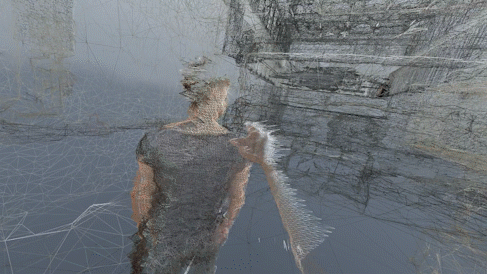
Andrej and Mária’s work, Dust was selected by industry guest judges from Aspex Portsmouth, The MAC, York Mediale, Society of Scottish Artists, The London Group and Open Eye Gallery.
See their work on our homepage.
Website / Follow Andrej & Mária on Instagram
Let us know you want us to write more content like this with a love!
Share

